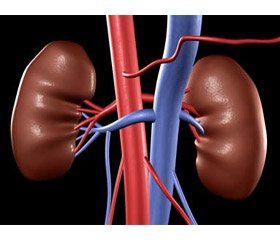Журнал «Медицина неотложных состояний» 1 (64) 2015
Вернуться к номеру
Acute renal failure in severe poisoning by methadone
Авторы: Nedashkіvsky S.M. - Natsionalna Medical Academy of Postgraduate Education named after PL PL, m. Kyiv;
Kuchma A.B., Struk V.F., Mantis A.G. - Kyyivska City Hospital ambulance
Рубрики: Медицина неотложных состояний
Разделы: Клинические исследования
Версия для печати
Іntroduction
Every year in Kyiv Emergency Center for Treatment Acute Poisonings hospitalized from 1800 to 2200 patients. During the past three years, we note a significant increase of patients with acute poisoning and overdose of methadone. For 2012 44 hospitalized patients, 2013 - 39, in 2014 - 139.
A significant increase in methadone overdose due to the fact that this synthethic drug produced illegally and is independent of seasonal fluctuations like selfmade product from poppy flower. In addition, time efficient acting - much longer. Half life of methadone averages about 36 hours. Therefore, drug addicts after administration of a dose, can long time to be in an uncomfortable position which leads to muscles compression and there subsequent injury. This complication leads to long – term smash tissue syndromе. Muscles trauma is commonly associated with myoglobinuria, and if this is sufficiently severe, it can result in acute renal failure. Severity of the patients' condition determine the duration of stay in the intensive care unit.
Materials and Methods
It was performed a retrospective study of 299 patients with methadone poisoning and complications of this poisoning in period of 2012 – 2014 years. All patients were divided into 3 groups. The group №1 (n = 235) included patients without long – term smash tissue syndromе. The group № 2 (n = 28) included patients with long – term smash tissue syndromе and saved diuresis. Also patients with transient acute renal failure, who managed to do without hemodialysis. And the group № 3 (n = 36) - patients with long – term smash tissue syndromе complicated acute renal failure. It was assumed that the urine output of less than 50 ml / h. should be considered as oliguria.
Results
In all groups of patients, there were no significant differences by gender, age, a combination of methadone with alcohol. Of the 299 examined were 38 (12.7%) women and 261 men (87.3%). In treatment 3 died: one patient from group №1 and 2 patients from group №3. The cause of death was multiple organ dysfunction syndrome. In addition to the 50 people who abuse methadone in biological fluids were detected other substances. Among them - 43 alcohol with concentration levels: of 0,5 ‰ to 1,5 ‰ - 33; more than 1,5 ‰ to 2,5 ‰ - 9; more than 2,5 ‰ – 1. In addition, 1 patient observed mixed poisoning: methadone, Δ-tetrahydrocannabinol, benzodiazepines (dominated clinic of methadone poisoning). The patient entered the group №2. In 2 patients except detected methadone verified morphine (group №3), in others 4 (also in group №3) - other opiates (tramadol, codeine). The age of patients was 29,2 ± 4,8: from 18 (1) till 45 (2). Most patients with a methadone poisoning recovered, avoiding the development of acute renal failure (patients group №1), although most of them in the early hours of hospitalization were on mechanical ventilation. Patients who had severe conditions were included in group №3. Number of dialysis in one patient ranged from 1 to 11 sessions. Stay in the intensive care unit ranged from 3 to 35 days.
In 24 patients was defined levels of creatine kinase. This study performed in patients with moderate long – term smash tissue syndromе in order to predict the possibility of acute renal dysfunction. Taken data suggest that a significant increase of this enzyme about 5,000 u / l and more is reliable predictor of acute renal dysfunction.
Intensive therapy during long – term smash tissue syndromе is to be started in the earliest time, because the characteristic changes are formed during 5-6 hours after compression. Retrospective analysis seems to show that early aggressive fluid replacement with saline is beneficial in minimizing the occurrence of renal failure. The longer it taken for rehydration to be initiated, the more likely it is that renal failure will developed. Mannitol and bicarbonate are commonly employed following the initial resuscitation with saline. It has been postulated that these patients may be unable to alkaline their urine without the administrated of bicarbonate, and this increases the risk of tubular cast development and renal injury.
Conclusions
1. All unconscious patients from an overdose of drugs, especially methadone should be examined for the presence of positional compression syndrome for early prevention of acute renal failure.
2. Reducing the amount of urine, change its color to a dark, increase the level of creatine kinase > 5,000 U / l should be considered as predictor of acute kidney injury.
3. The early aggressive fluid replacement is the most effective method of preventing and reducing cases of acute renal dysfunction in long – term smash tissue syndromе.

